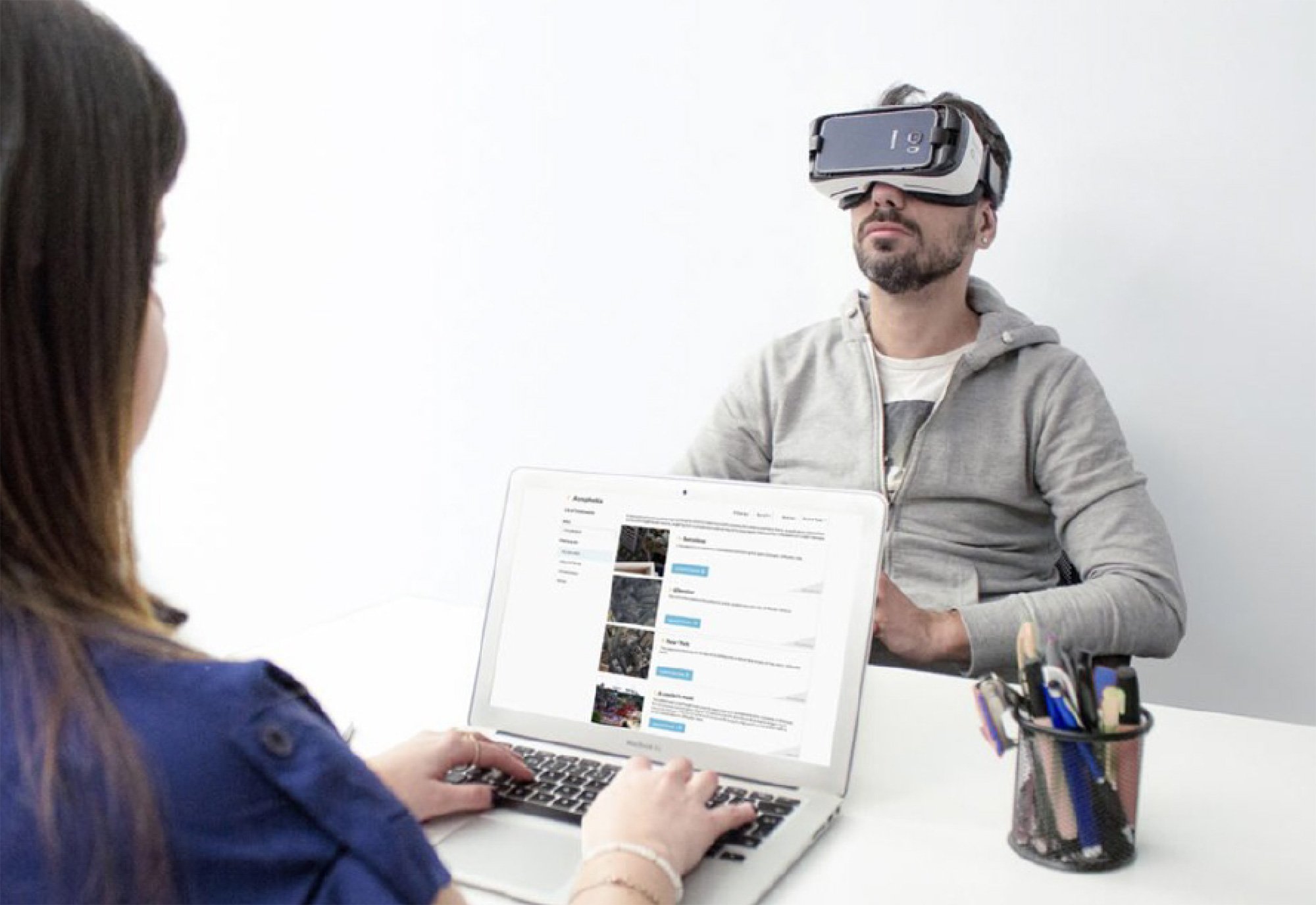Virtual Reality Therapy for Your Fears, Insecurities & Problems
Virtual Reality therapy offers the opportunity to reproduce real-life scenarios and even adapt and control these environments to meet clients’ individual needs all in the safe comfort of the therapy room or your home. This technology allows us to work in a way that cannot be reproduced in real life. It offers us the option of evaluating and intervening with the patient “within” a specific situation without the need to leave the therapy room. It also allows us to repeat certain conditions as many times as necessary to reach a specific goal.
Relaxation
Mindfulness
Cleanliness
Driving
Flying
Eating
Sleeping
Darkness
Exposure
Exams
Worrying
Moods
Tight Spaces
High Places
Body Image
Bullying
Public Speaking
Social Situations
Moving Dots
Crowded Spaces
Medical Appointments
Virtual Reality Therapy for Your Fears,
Insecurities & Problems
Yes and no. On one hand, like video games. VR finds stronger appeal in people who engage their imagination to the furthest extent possible during sessions. Using your imagination can help foster a sense of immersion. VR has been shown to work well with children for just this reason. On the other hand, though. VR is different from video games in that unique technological capacity helps enhance the sense of presence. In other words, when you use this technology, your ability to distinguish between the virtual world and reality could become negligible.
Various studies have shown that VR can promote a sense of presence and trigger bodily responses similar to in vivo exposure. These reactions will help your therapist to work through them in sessions without the need for you to be placed in or exposed to an actual, high-risk scenario.
Many people with mental conditions tend to prefer VR Interventions because in vivo exposure can be too intense VR gives your therapist more control of the environment to which you are exposed, so that the level of exposure adjusts to and fits your needs and the invention process. Also, VR therapy respects your confidentiality, being that you won`t need to leave your therapist`s office like in cases of real-life exposure.

Step-by-Step
How a VR Session Works
Your therapist will prepare the VR headset, headphones and electrodermal response sensor.
The velcro sensors in the electrodermal response sensor will be positioned on your left hand’s index and middle fingers.
When you put on the headset, you’ll see a code appear. When you do, let your therapist know. This code will help your therapist pair the VR headset with the platform.
You’ll now see a field. Please wait for your therapist to prepare the following scene.
At this point, your virtual session has begun and your therapist will begin to guide you, through the VR scene. During the session, your therapist may ask you to define your level of anxiety using a scale from 1 to 10.
VR will transport you to a virtual environment. Part of its success is attributable to your ability to let yourself go and be both immersed and present in the experience. If you do that, you’ll have a more vivid VR session that generates emotions and thoughts and helps your therapist support you.
Houston Therapists Who Specialize in Therapy for Individual Therapy

If you are experiencing similar
problems please contact us
(832) 315-5793


